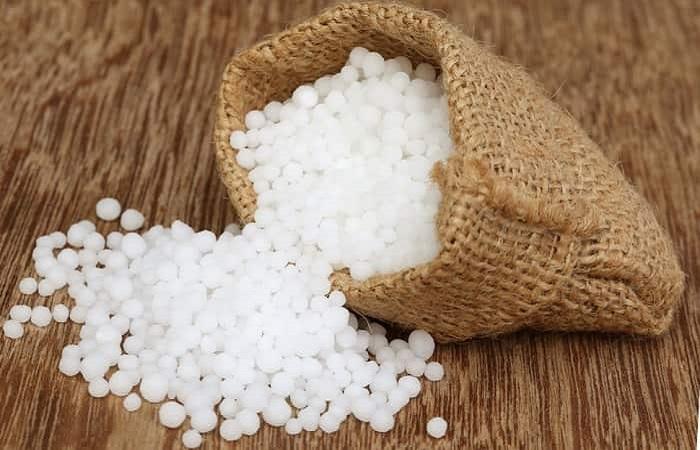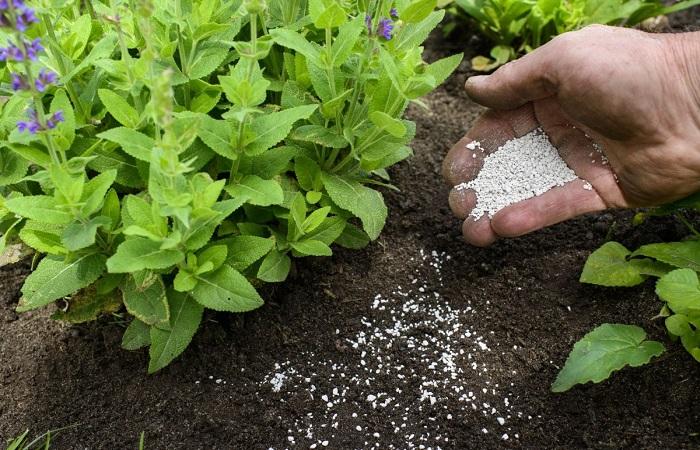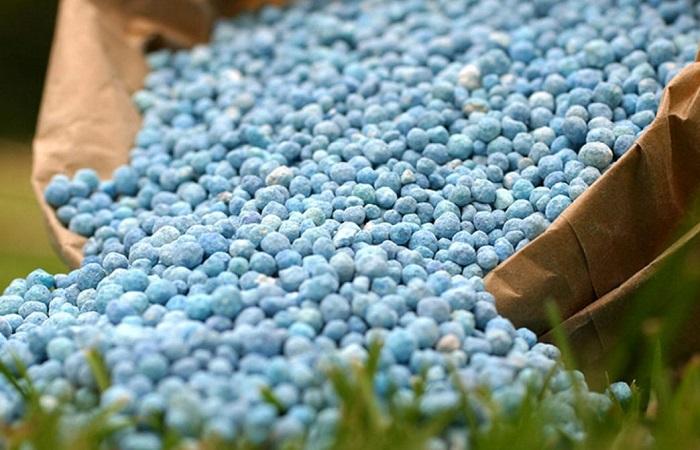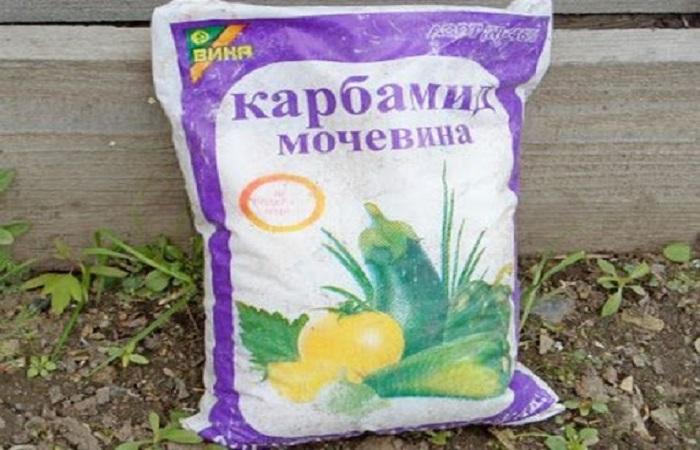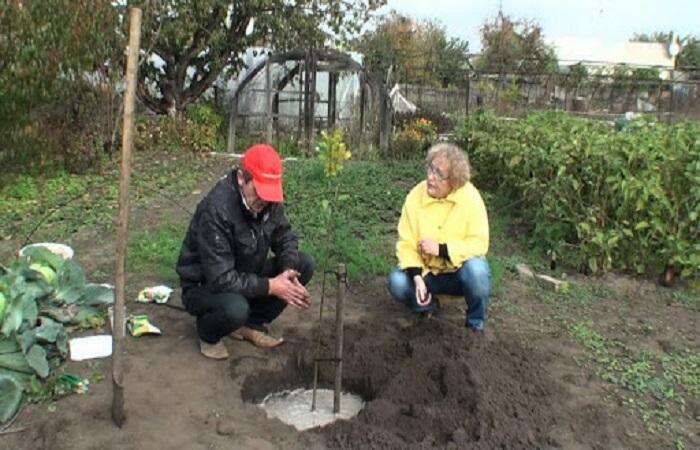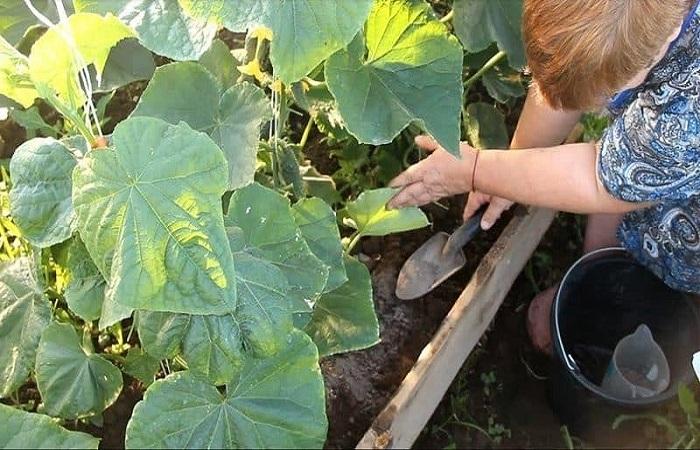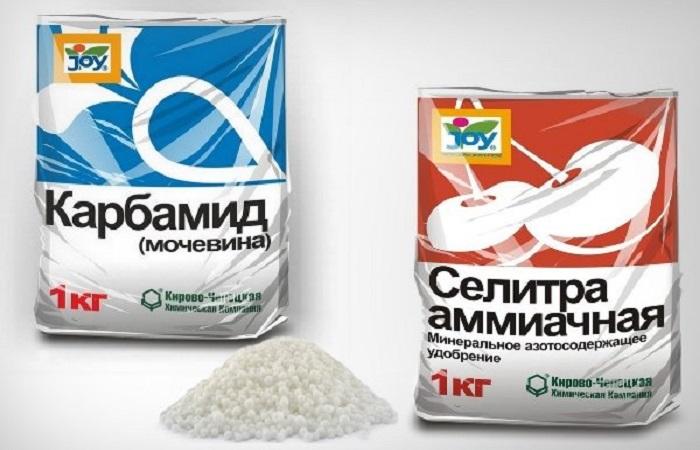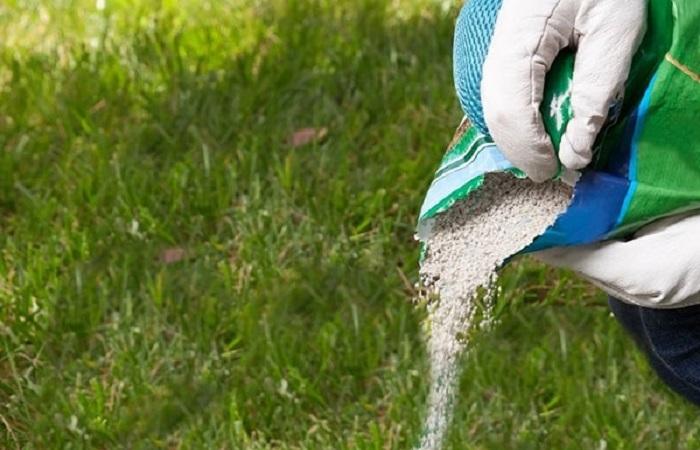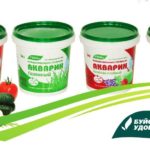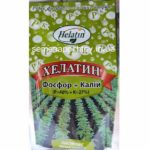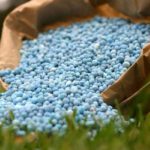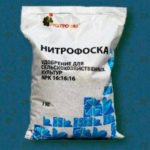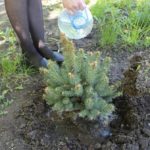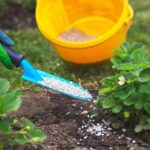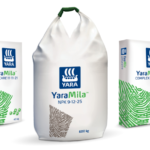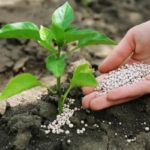The use of nitrogen fertilizers helps to achieve excellent results in growing plants. Such products are of great importance for saturating plants with nutrients. Nitrogen is considered the main building material of plants. Thanks to its use, the above-ground part of the crop develops and its green mass increases. Therefore, fertilizers with the addition of this element are most often used at the beginning of the growing season.
- What are nitrogen fertilizers
- Why do plants need them?
- Types of nitrogen-containing fertilizers
- Amount of nitrogen in different types
- Mineral
- Phosphorus
- Urea
- Timing and recommended dosage
- How to properly apply nitrogen fertilizers
- Liquid types and features of their application
- Precautionary measures
- Consequences of nitrogen deficiency
What are nitrogen fertilizers
Nitrogen fertilizers are substances that contain nitrogen compounds. Their main purpose is to increase the level of this element, which ultimately leads to an increase in yield parameters. Nitrogenous substances are required by plants for full growth and development.
Nitrogen fertilizers contain different amounts of the main component. They may also include additional ingredients. Single-component fertilizers are divided into 5 groups. This classification is based on the presence of different chemical forms of the active component. To choose the optimal fertilizer and use it correctly at home, you need to determine which group it belongs to.
Why do plants need them?
Nitrogen fertilizing is of great importance for plants. They help achieve the following results:
- stimulate the growth of vegetative organs of crops;
- saturate the plant with amino acids;
- increase the level of tissue water content;
- increase cell volume and reduce the thickness of the cuticle and membrane;
- accelerate the rate of mineralization of additional components that are introduced into the soil;
- improve the ratio of nitrogen and carbon in the soil structure;
- increase compensatory abilities that are responsible for the reaction of cultures to traumatic factors;
- significantly increase yield parameters.
Types of nitrogen-containing fertilizers
All nitrogen products are divided into 5 important categories. This classification is based on the form of the nitrogenous compound. So, experts identify the following types of fertilizers:
- Nitrate - this category includes calcium and sodium nitrate.
- Ammonium - these include ammonium sulfate and ammonium chloride.
- Ammonium nitrate - these include ammonium nitrate.
- Amide - the main fertilizer from this group is urea.
- Liquid ammonia products – This category includes ammonia water and anhydrous ammonia.
Amount of nitrogen in different types
Depending on the type of feeding, the amount of the main component differs. This allows you to choose the best option taking into account your tasks.
Mineral
This category of nitrogen fertilizers is divided into simple and complex. The first group includes 1 main chemical component and several additional ones. Complex preparations can include up to 3 main ingredients and several additional ones.
Popular simple fertilizers include:
- Ammonia. Thus, liquid ammonia includes 82.3% nitrogen, aqueous – 17-21%, ammonium chloride – 24-25%, ammonium sulfate – 20.5%.
- Nitrate. These include sodium and calcium nitrate. The first preparation contains 16.4% nitrogen, the second – 13.5-15.5%.
Complex compositions include ammonium nitrate. Among the most common representatives of this group are:
- ammonium nitrate – includes 34-35% nitrogen;
- ammonium sulfonitrate – includes 25.5-26.5% nitrogen;
- lime-ammonium nitrate – contains 20.5% of the main substance.
Phosphorus
Products that include nitrogen and phosphorus are called nitrogen-phosphorus. They can be two- or three-component. The first group includes the following substances:
- ammophosphate – contains 45-46% phosphorus and 6% nitrogen;
- nitrogen phosphate - includes 33% nitrogen and 3-5% phosphorus;
- ammophos - contains 11-12% nitrogen and up to 50% phosphoric acid;
- diammonium phosphate - it contains 18% nitrogen and 46% phosphates;
- nitrophosphate - includes 32-33% nitrogen and 1.3-2.6% phosphorus.
Popular three-component products include:
- nitrophoska - it contains 12-17% nitrogen, phosphorus and potassium;
- superphos-NS - includes 12% nitrogen, 25% phosphoric acid and sulfur;
- ammophoska - it contains 12% nitrogen, 15% phosphorus and potassium, 14% sulfur;
- Diammofoska - includes 10% ammonium nitrogen, 26% phosphoric acid and potassium.
Urea
This drug is also called urea. Its nitrogen level is 46%. The substance is not recommended for use in the fall, as it is highly acidic. To achieve maximum effect from using this product, it should be combined with organic matter. The composition does not cause leaf burn and is well suited for foliar application.
Timing and recommended dosage
It is recommended to apply nitrogen fertilizers in the spring - with the onset of warm weather. The specific timing of use of such drugs depends on regional characteristics. Most often this is done in mid-April.
In order for nitrogen preparations to give maximum effect, you should adhere to the following order of their use:
- In April, it is recommended to apply nitrogen preparations to the tree trunks. For 1 barrel it is required to use up to 150 grams of active substance. This means that you will need 200 grams of urea. It is also permissible to use 300 grams of ammonium nitrate.
- In May, it is worth feeding bushes and trees with 100 grams of nitrogen. This amount is enough for 1 barrel.
- In the second half of June, it is worth applying the drugs in the same way as in mid-May. This feeding will help preserve the ovaries.
Starting from July, it is not recommended to apply nitrogen preparations. Otherwise, the plants will not have time to prepare for winter.
How to properly apply nitrogen fertilizers
The use of nitrogen fertilizers has some peculiarities. It is important to take into account their names. Organic products can be added to the soil for seedlings and when digging up the soil at the stage of preparing the beds.
The use of mineral fertilizers to feed plants also requires compliance with a number of rules:
- All nitrogen substances are easily soluble in water. They can be mixed with room or lukewarm liquid. However, the best option is considered to be water at a temperature of 50-60 degrees.
- Liquid mineral products can be poured into already moist soil. This will help avoid burning young crops.
- Urea is considered the most concentrated nitrogen preparation. It must be applied very carefully to avoid fattening the crops.
Liquid types and features of their application
Today there are several types of nitrogen preparations in the form of solutions:
- Liquid ammonia is an anhydrous compound that has a maximum nitrogen content. The amount of this component reaches 82.3%. It is added using special machines. This should be done in spring and autumn. A prerequisite is sufficient soil moisture.The composition must be applied to a depth of 12-15 centimeters.
- Ammonia water is aqueous ammonia. It is obtained by dissolving coke or synthetic ammonia in water. The first type of fertilizer may contain 21% nitrogen, the second - 17%. The substance has a pungent odor and requires strict adherence to safety precautions when applied.
- Urea-ammonium nitrate is a liquid solution of ammonium nitrate and urea. The preparation contains 28-32% nitrogen. The composition is suitable for use as a basic fertilizer and foliar feeding. It is stored in sealed tanks under pressure.
Liquid preparations are prohibited from being applied to the soil surface. This is due to their rapid evaporation, which is harmful to the environment. In this case, the process turns out to be ineffective.
Precautionary measures
When working with nitrogen substances, it is important to strictly follow the instructions for their use. In this case, it is strictly forbidden to violate the dosage. It is important to wear closed and tight clothing to avoid contact of substances with the skin and mucous membranes.
Particularly dangerous are liquid substances – ammonia and ammonia water. Therefore, only people who have undergone appropriate training and medical examination can work with them. They must wear special protective clothing.
Ammonia fertilizers must not be stored or used near sources of open fire - up to 10 meters. It is also important to consider that fine-crystalline nitrate quickly cakes. Therefore, it cannot be kept in rooms with high humidity.
Consequences of nitrogen deficiency
Lack of nitrogen negatively affects the condition of plants. The main consequences of a deficiency of this element include the following:
- inhibition of crop growth;
- atypical color of the leaf blades - they turn yellow;
- Drying of the tips of the leaves indicates a severe deficiency of the substance.
Nitrogen fertilizers are highly effective and promote active growth of cultivated plants. In order for such substances to give the desired effect, it is important to choose the right composition and strictly follow the instructions for its use.

